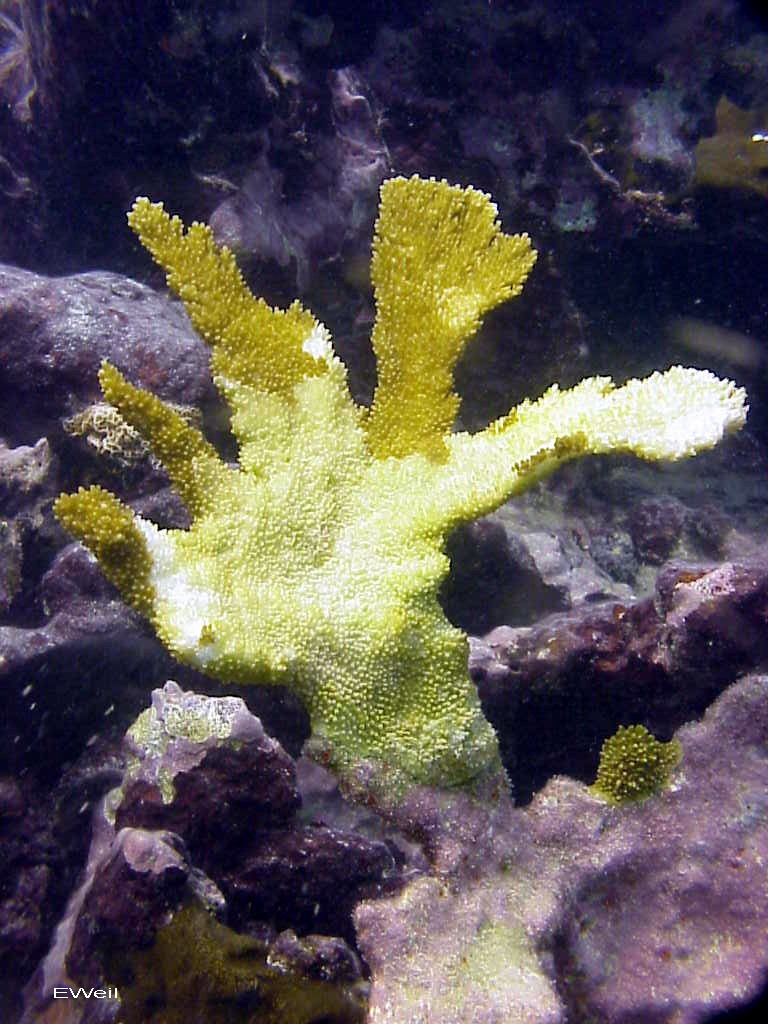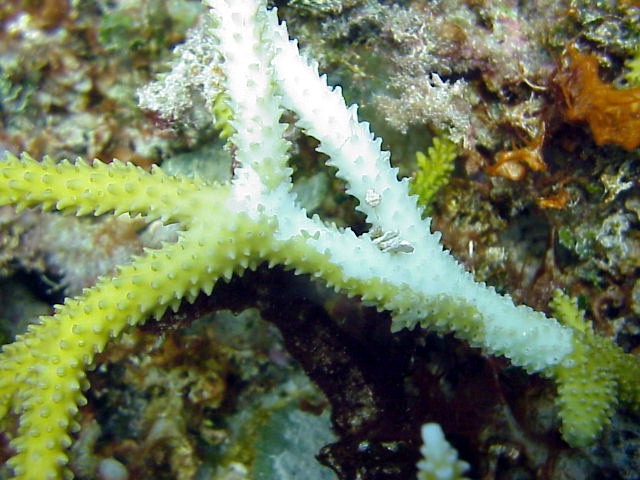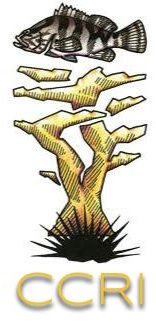White-band disease (WBD) is the leading cause of mortality to Caribbean acroporid corals, which previously were among the most important reef building corals and served as critical shelter for fishes. These corals are now listed as “Threatened” under the US Endangered Species Act. The disease exhibits a sharp demarcation between apparently healthy coral tissue and exposed coral skeleton. Affected colonies of elkhorn coral (Acropora palmata) were first reported in the early 1980s. WBD has also affected staghorn coral (A. cervicornis) populations near La Parguera and, in a more virulent form, among inshore nurseries and reef environments throughout Culebra Island. WBD is still considered one the most destructive of problems facing corals. Isolated cases of WBD were observed between 1995 and 2003, including an outbreak that affected 15% of the standing colonies on a reef off the east coast of Mona Island.


References & more
- Ballantine D.L., Weil E., Ruiz H. (2004) Coralline white band syndrome, a coralline algal affliction in the tropical Atlantic. Coral Reefs 24: 117
- Randall C.J., van Woesik R. (2015) Contemporary white-band disease in Caribbean corals driven by climate change. Nature Climate Change. 5pp.
- Sweet M.J., Croquer A., Bythell J.C. (2014) Experimental antibiotic treatment identifies potential pathogens of white band disease in the endangered Caribbean coral Acropora cervicornis. Proceedings of the Royal Society 281 (20140094): 9pp.
